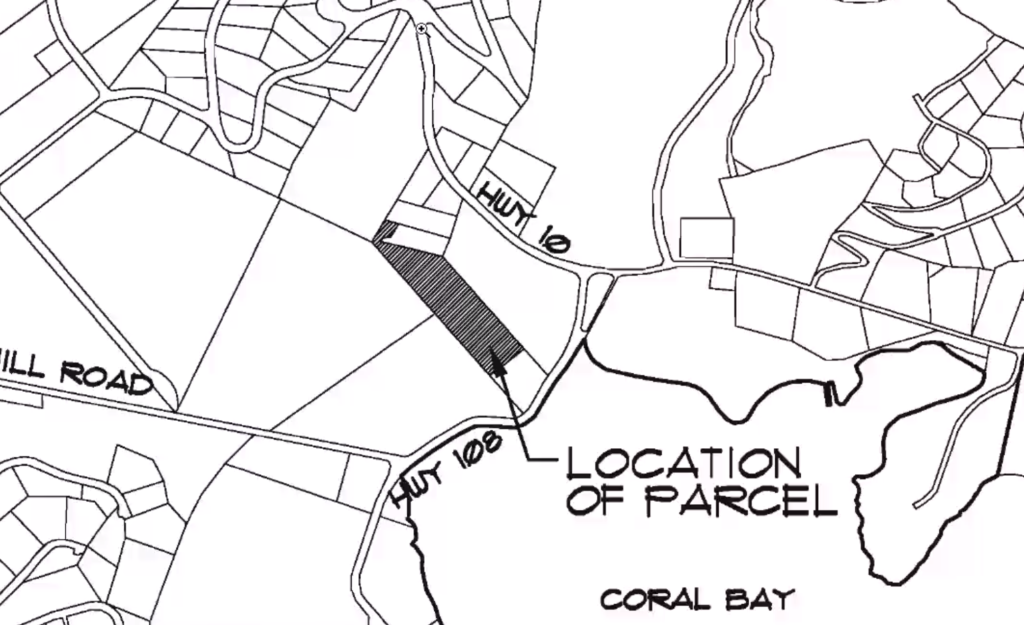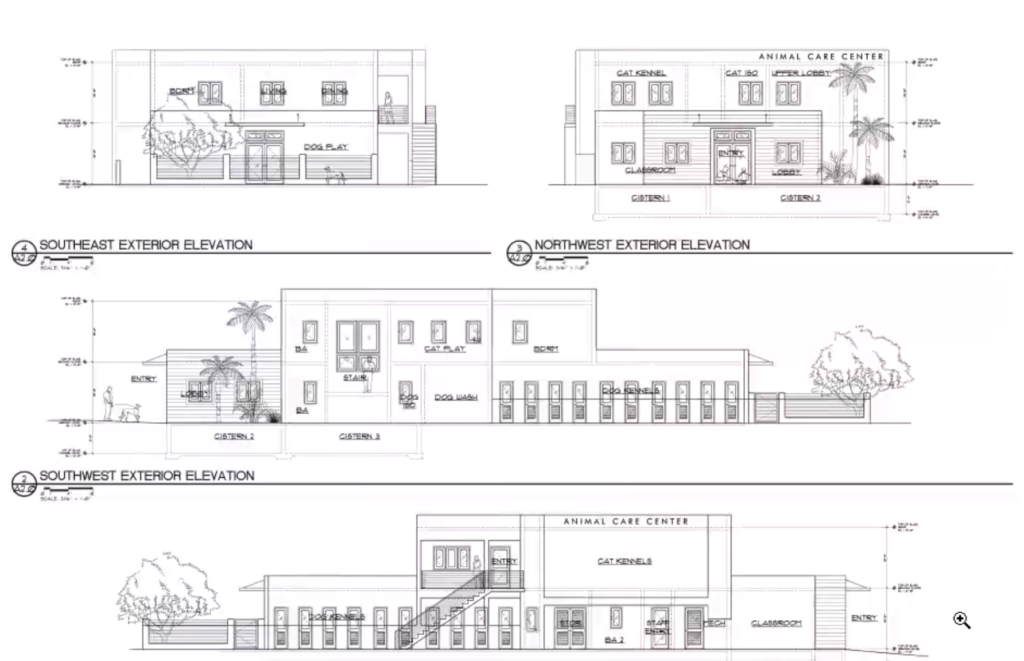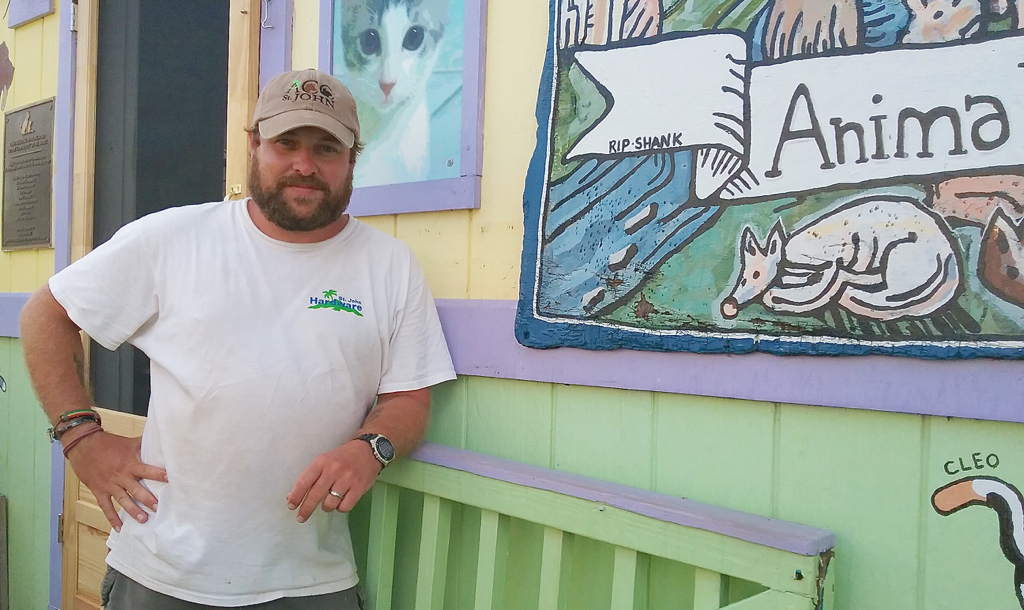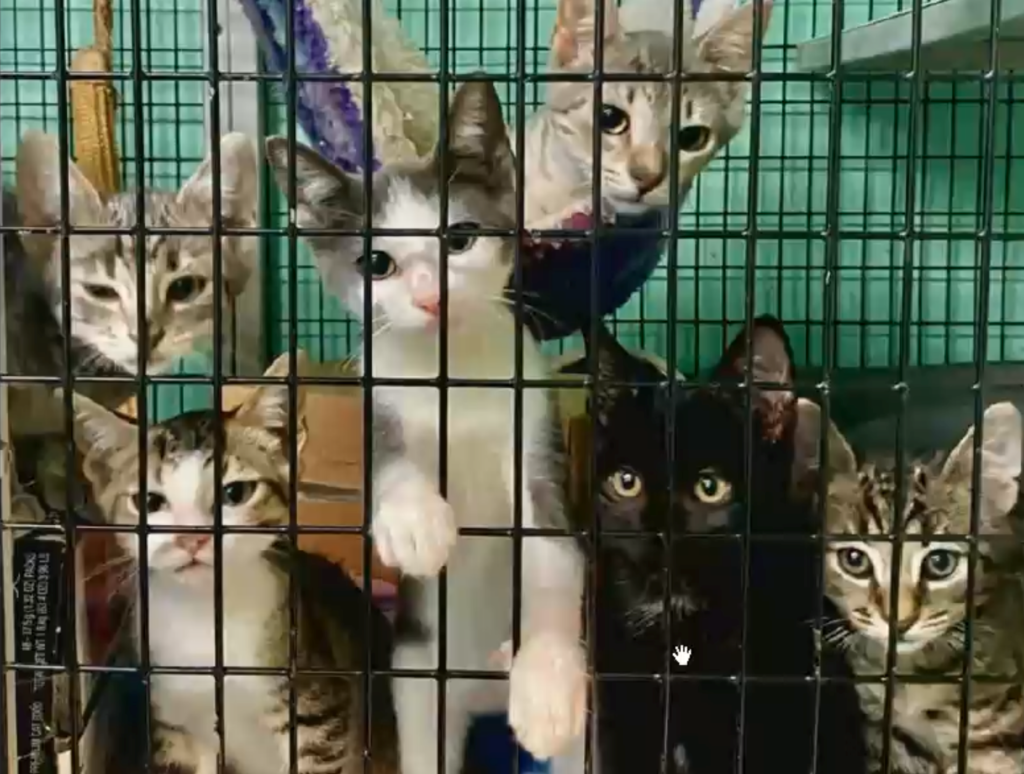
A proposal to allow the St. John Animal Care Center to build a new facility in Coral Bay drew a mixed reaction at an online zoning hearing held Friday morning.
Planners at the Department of Planning and Natural Resources called the virtual meeting to discuss a request to rezone a 2.3-acre parcel near Pickles in Coral Bay from R-2 (residential low density) to B-2 (business secondary/neighborhood.)
The plan calls for the construction of a 5,000 square-foot, two-story building with 20 kennels for dogs on the ground floor and 19 kennels for cats on the second floor.

Dozens of people listened in, sent in emails, and participated in the online chat during the meeting. Testifiers invariably praised the Animal Care Center for providing valuable services to the island, but they disagreed about the proposed location at the floor of the valley in Coral Bay.
Opponents to the rezoning generally sent in their comments by email. They said their chief concern was the likelihood of uncontrollable noise from barking dogs echoing throughout the surrounding hills. Coral Bay, primarily residential, is known for its tranquil atmosphere.
“The wind and shape of the valley really carry noise,” said Coral Bay resident Gordon Moore in an email. “It’s really hard to speak up against an organization which does so much good work. There are a hundred or more [vacation] rentals in this area. People rely on [the income] to support their families.”
Joe Kessler, a resident of Ajax Peak, said the barking “will impact the residents of the entire valley.” Although the sound from music or car racing often disturbs the quiet, Kessler said, “those are of relatively short duration, so we suck it up. But the barking will be pervasive.”
Proponents of the project said the noise could be controlled and the benefits far outweigh the concerns. They presented a petition with more than 500 signatures, including 150 residents of St. John. Dozens of others voiced their support during the meeting chat.
Project designer Michael Milne of Barefoot Design Group, LLC said the building was designed to keep noise at a minimum. The kennels would all be located inside the structure’s concrete walls and laid out so that the animals would not face each other, thereby cutting down on interaction that could lead to barking.
The dogs would be let out to exercise during the day but would be completely enclosed from 5 p.m. until the morning when the shelter opens.
The second floor of the proposed structure includes an apartment for shelter staff to be on the premises at all times if the animals create a disturbance.
Milne also said that if the rezoning request was granted, experts on noise abatement would be consulted to identify the best technology available. “We can do our best to affect the noise. We can put roofs with buffering over the runs.”
Construction of a new facility would allow the ACC to better care for the abandoned, abused, and neglected animals that are currently housed in a rented building in Cruz Bay near the Elaine I. Sprauve Library.
“In Cruz Bay, we can comfortably house 11 dogs and 25 cats, and we tend to be at capacity,” said shelter manager Ryan Moore. In his seven years working as manager at that location, he said, “We’ve never had a single complaint about noise.”

Moore said he didn’t expect their intake to increase in a new location, but rather that the animals could be accommodated more comfortably. Many of the animals housed in the shelter came from Coral Bay.
The ACC shelter in Cruz Bay started reaching capacity with the onset of the COVID-19 pandemic last spring, according to Moore. “Whenever there’s an abrupt loss of jobs, people have to give up their pets. Fortunately, we were able to weather that pretty well with more adoptions and fostering.”

The ACC is the only “no kill” animal shelter in the Virgin Islands. On Aug. 28 and Sept. 18 , they joined with other nearby island shelters to airlift 200 pets to off-island shelters which promised to find homes for the animals. The money for those flights was raised by a GoFundMe drive, according to Moore.
The ACC has raised funds throughout the year by holding flea markets, a themed gala in the winter, and Wagapalooza, a family-and-pet-friendly event in the spring. Wagapalooza last May and the upcoming gala in January have been cancelled because of the pandemic.
“So many people have worked in the last 30 to 40 years on behalf of the animals,” said Moore. “Hundreds of vacationers have come in to volunteer, foster or adopt. We get very little government funding, but we spend between $6,000 and $10,000 a month on food.”
“We’re geared toward animals – we provide food, medical care, spaying and neutering – but we provide services to humans as well,” said Moore. Long-time island residents recall incidents involving packs of feral dogs attacking pets or even people out on walks. Incidents like these are rarely reported these days.
The money to purchase the lot in Coral Bay was left as an endowment “by a woman who lived on the island and had a soft spot for animals who was involved with the ACC in the early years,” said Moore.
The proposed shelter in Coral Bay would include a classroom and provide space for a community garden and a playground. It will be air-conditioned and largely powered by solar panels.
The property is located within the floodplain, but Milne said the building could be constructed on another part of the property if engineers were concerned about flooding, or if historical or cultural resources were found on the site of the proposed footprint.
Several people involved in real estate said that it was difficult to find a suitable property that was already zoned to accommodate an animal shelter anywhere on the island, and the opportunity should not be missed.
“We’ve been paying rent for 15 years,” said Moore, adding that the current building needs expensive repairs. “We now want to have something to call our own.’
The public can submit comments until Oct. 14 by emailing them to leia.laplace@dpnr.vi.gov. DPNR has 30 days to approve, seek modifications, or deny the rezoning request.



I am very disappointed to hear that the ACC in St. John has run into such opposition! I can certainly understand the concerns re: the barking but the designers and architects have addressed these concerns with more than adequate remedies! The ACC does tremendously good work and is one of the only refuges abandoned animals have on the island! I have been a friend of the USVI since the late 70’s ! I was deeply disturbed by the number of starving stray dogs I encountered on my last visit a year ago and am reconsidering future plans to relocate there because of this very depressing stray population! I had planned to write ACC into my final arrangements in the hopes that my contribution would be used to improve conditions for these stray animals. However if there are going to be these roadblocks to the use of my bequest for such improvements then I see I need to rethink my plans! So glad I saw this article!